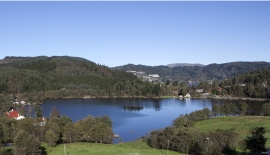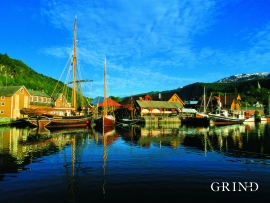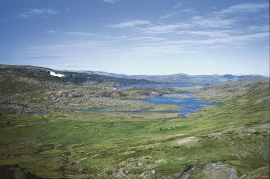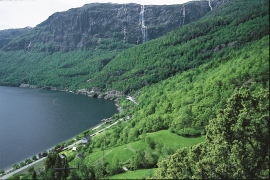- Remove Smallholdings filter Smallholdings
- Remove Conservation area filter Conservation area
- Remove Fish filter Fish
- Remove Boat- and shipyards filter Boat- and shipyards





Langavassmyrane
The Ruff lek on Langvassmyrane is the only known phenomenon of its kind on Hardangervidda. Every year it attracts hens from the whole plateau. The marsh is also the richest wetland in the county. This green oasis is located in a rocky moraine landscape a few hours walking distance south of Dyranut.

Bjoreidalen
Bjoreidalen is one of the classic bird localities on Hardangervidda. It is especially known for its wading birds, with as many as 17 of the 19 wader species that nest in Hordaland.

Veivatnet
From Kinsekvelven river and inward to Lake Veivatnet, we can wander through one of Hardangervidda's many fertile areas. A number of finicky plants grow here, and there are plenty of birds and fish. We can thank a lime rich soil for the diversity.


Skårsvatnet
In September, 1901, a load of golden orfe fish was transported from Preussen to Bergen for stocking of Nygårdspark. One of the originators of the project was the well known doctor Klaus Hanssen. Thirteen years later, Hansen was called to help. Would he please come to Øystese to assist the district doctor Peter Munch Søergaard in his attempt to combat tuberculosis in the village? Hanssen came - and had in his suitcase living "goldfish" from Nygårdsparken.

Uranes
One of the most magnificent deciduous forests in Hordaland grows along the border with Kvam. The rich growth comes from the phyllite and mica schist bedrock, together with a good climate. Along the fjord the summer is warm but not too dry, and in winter it is not too cold for plants that do not tolerate the frost.


